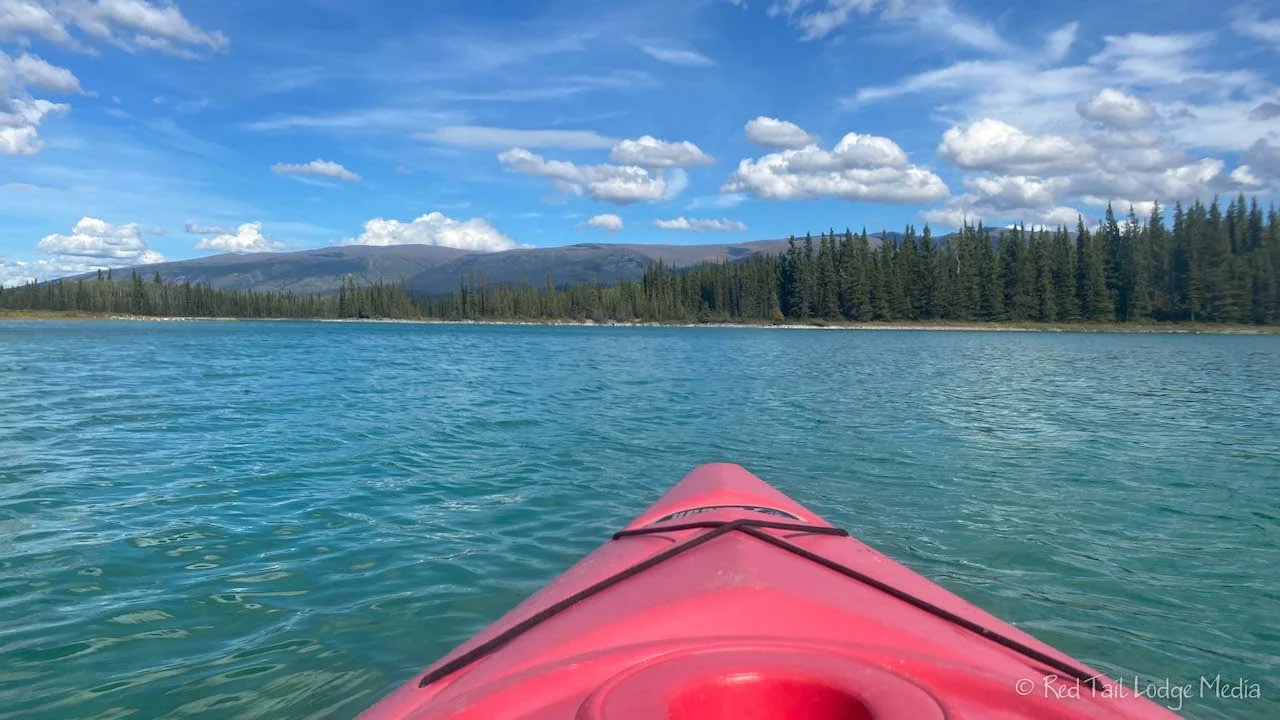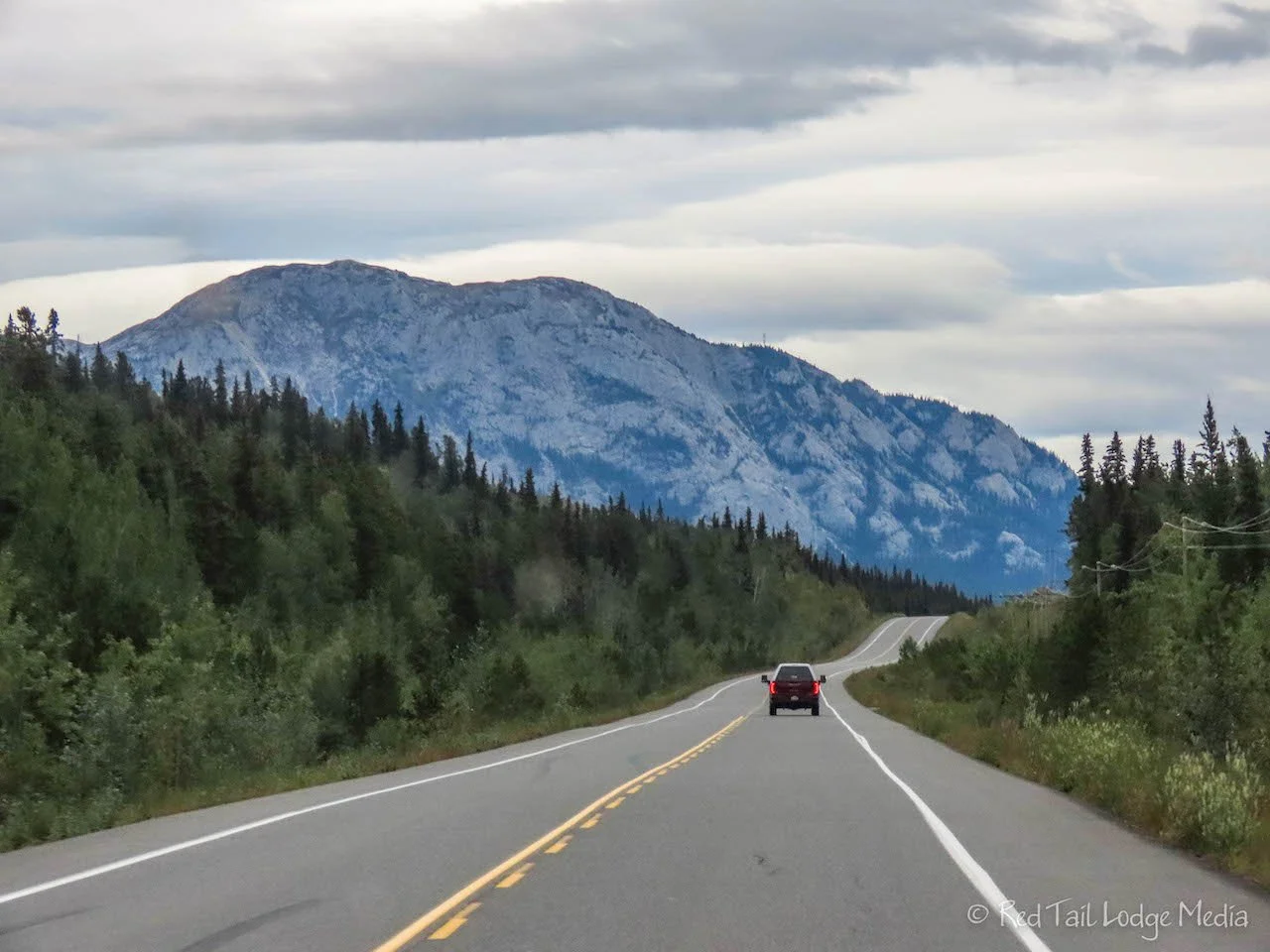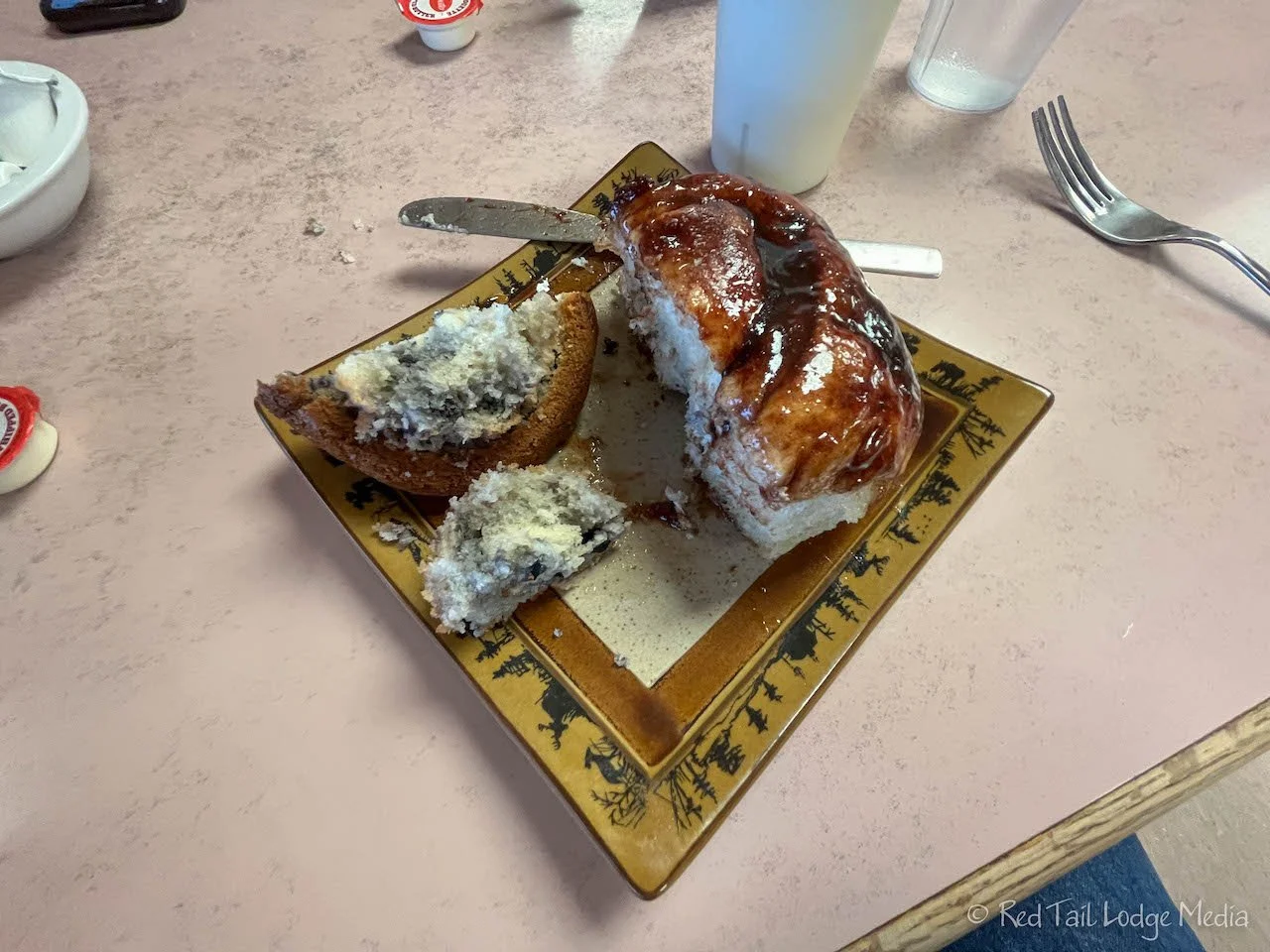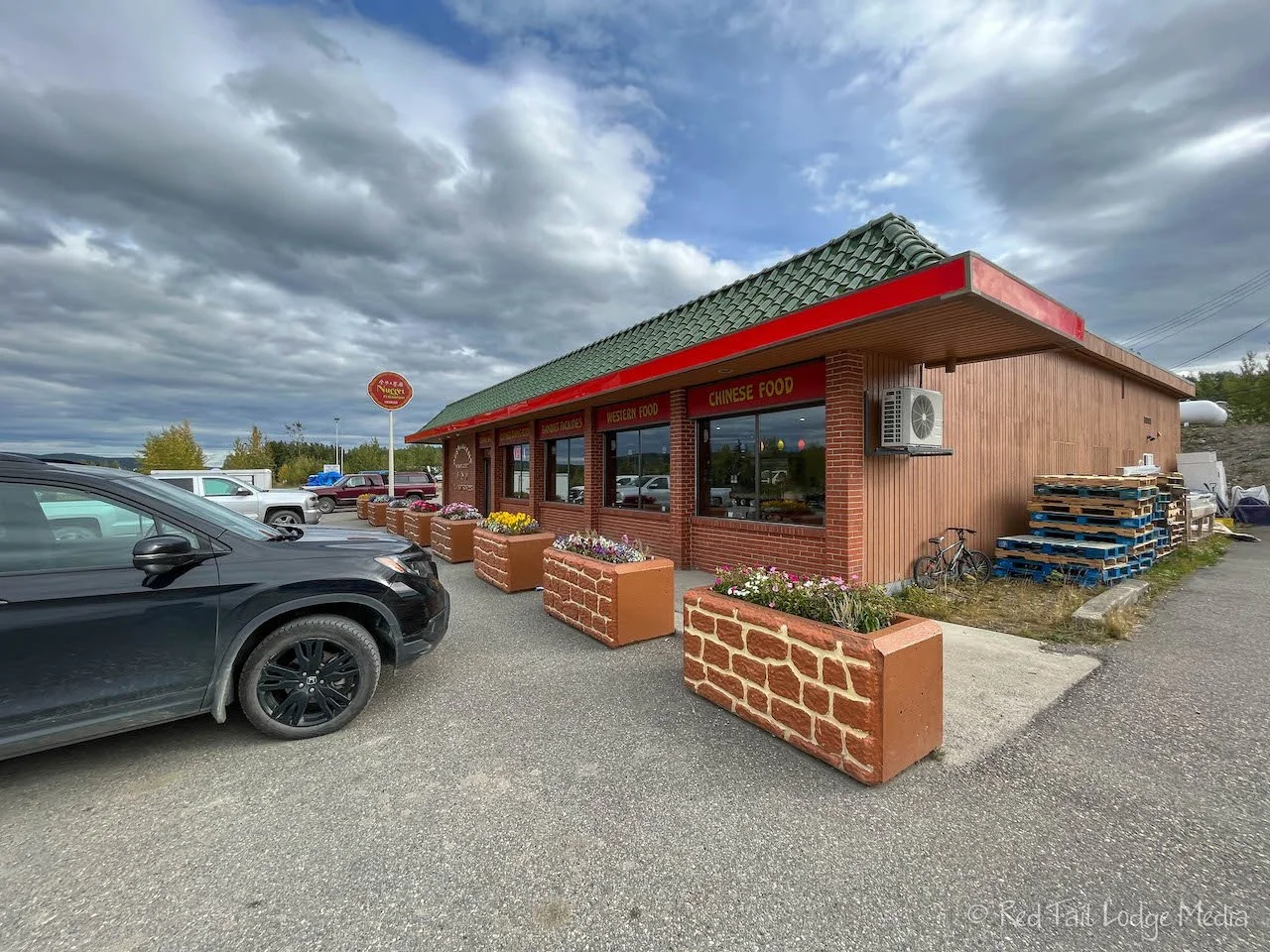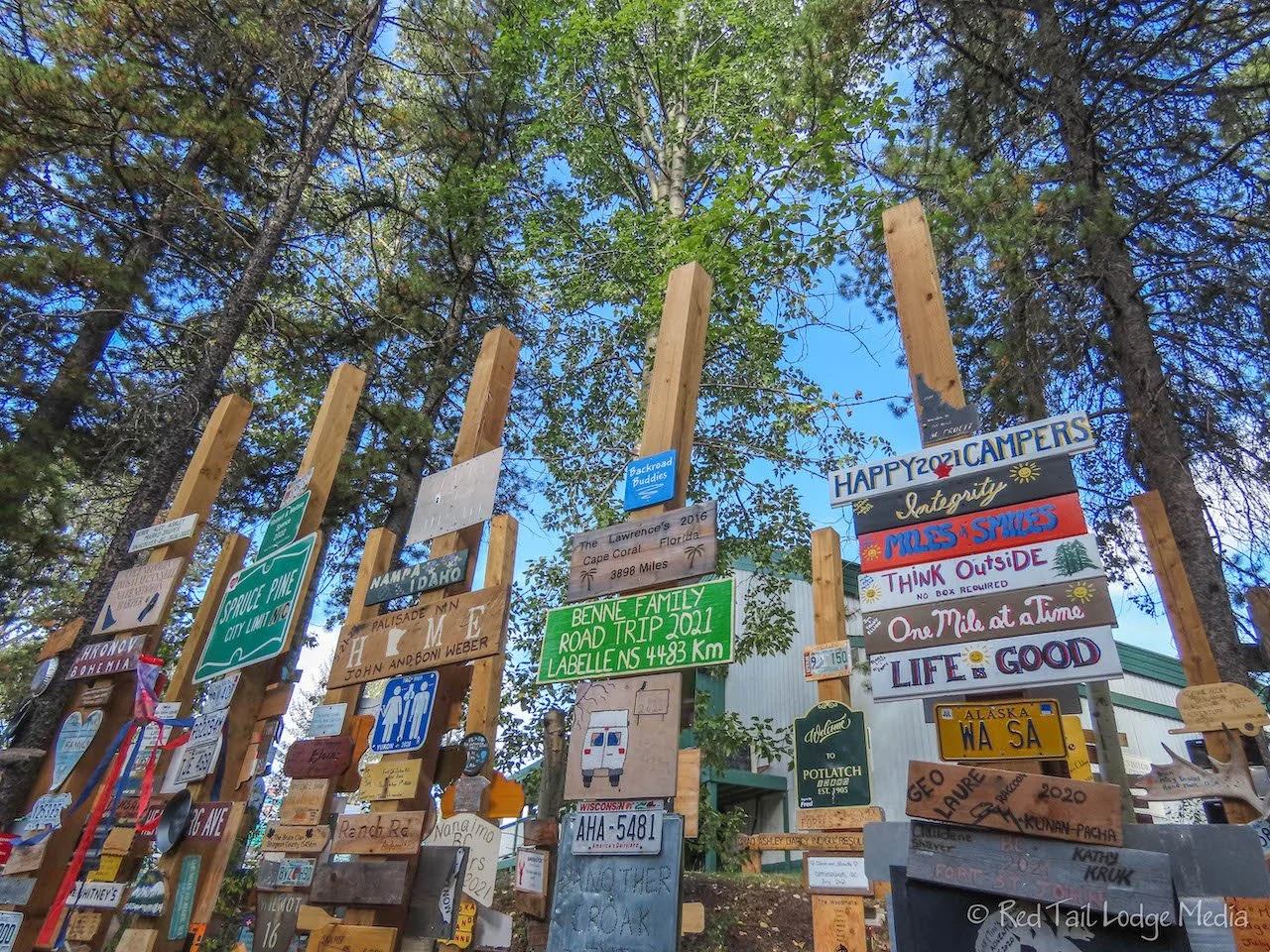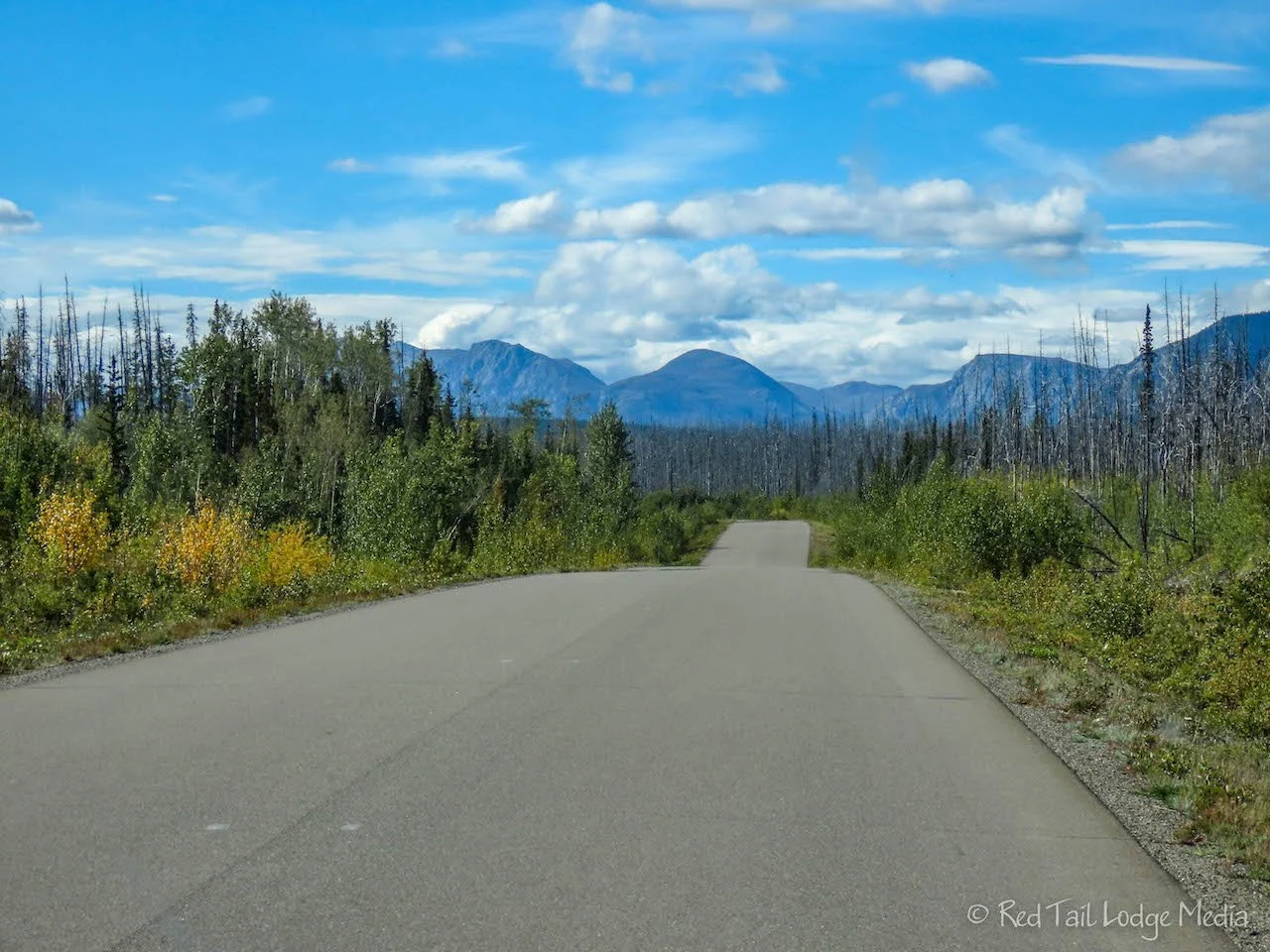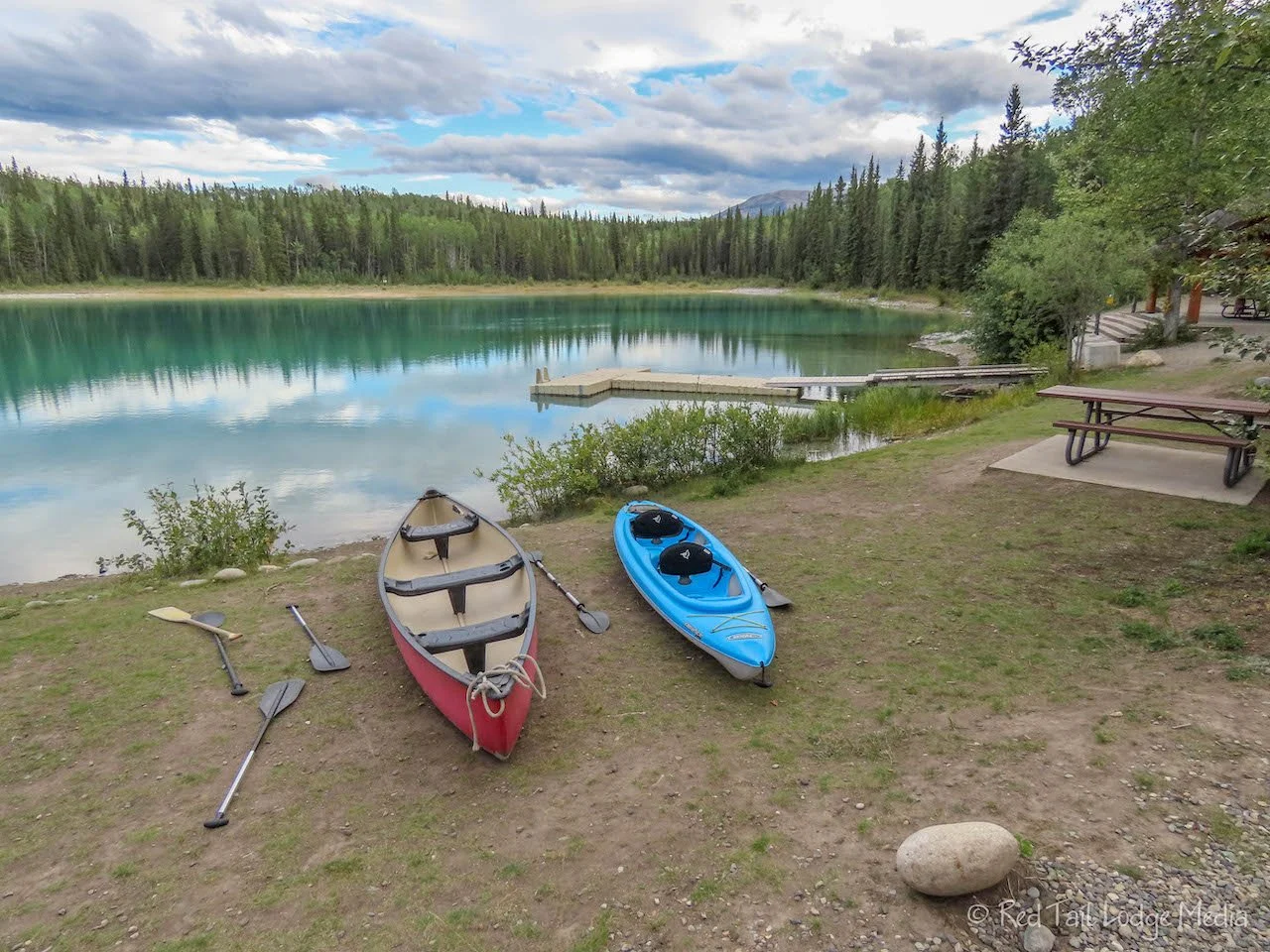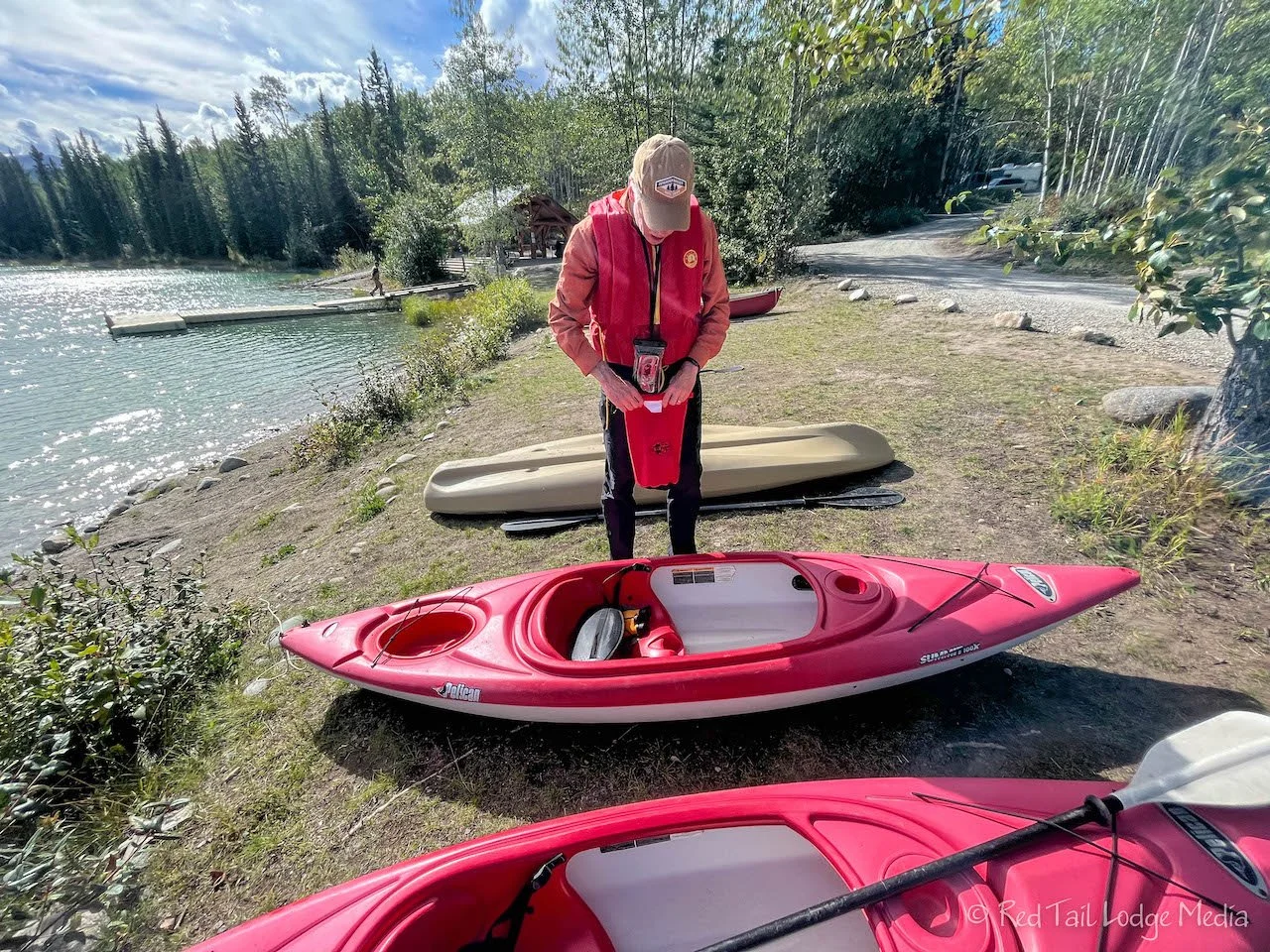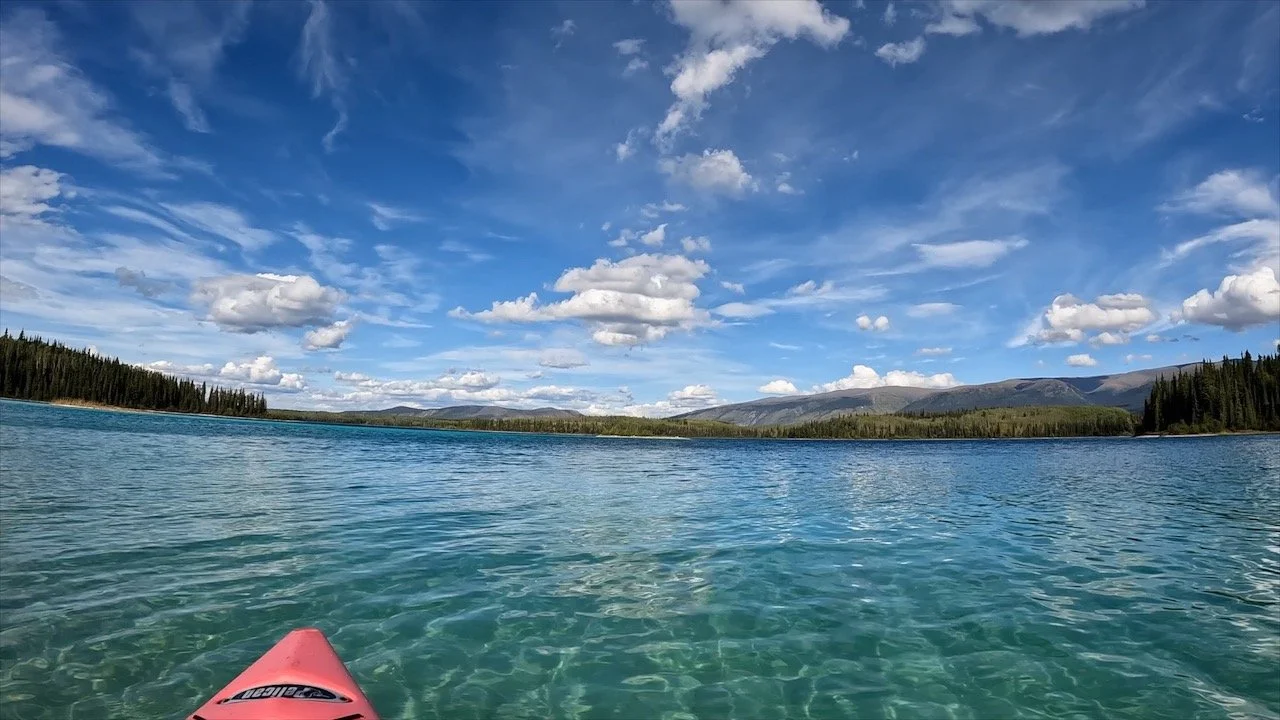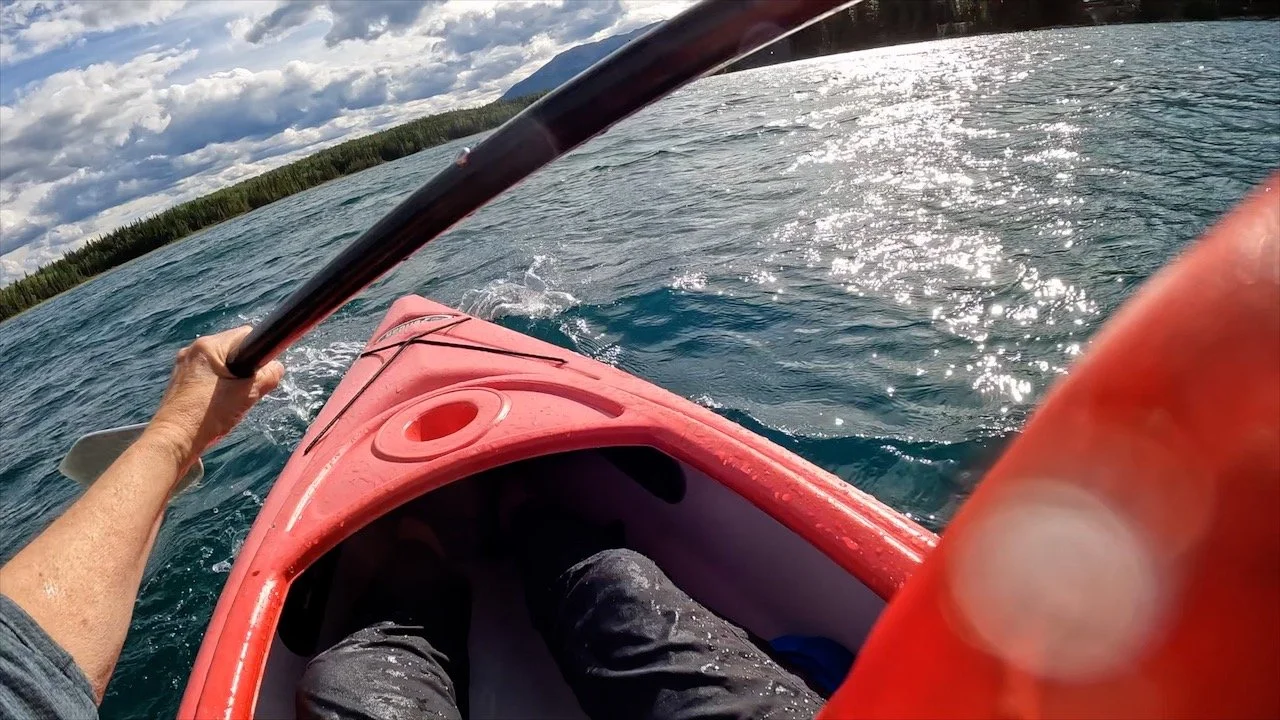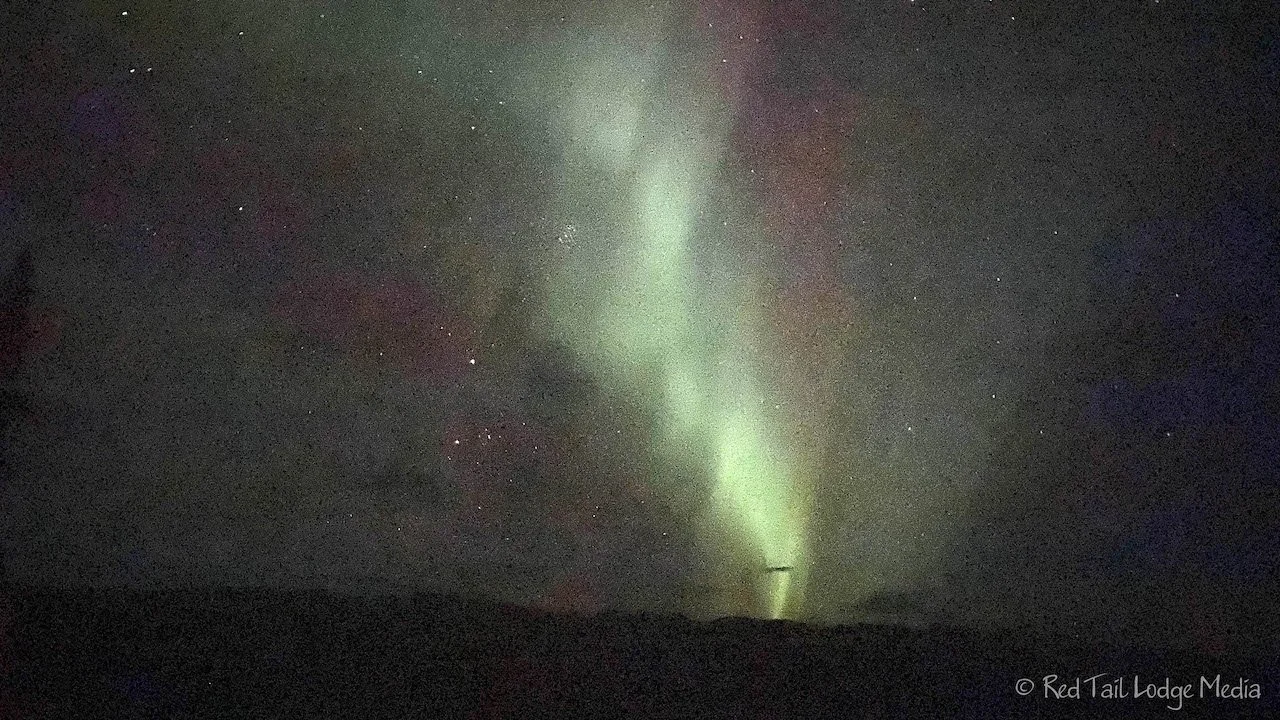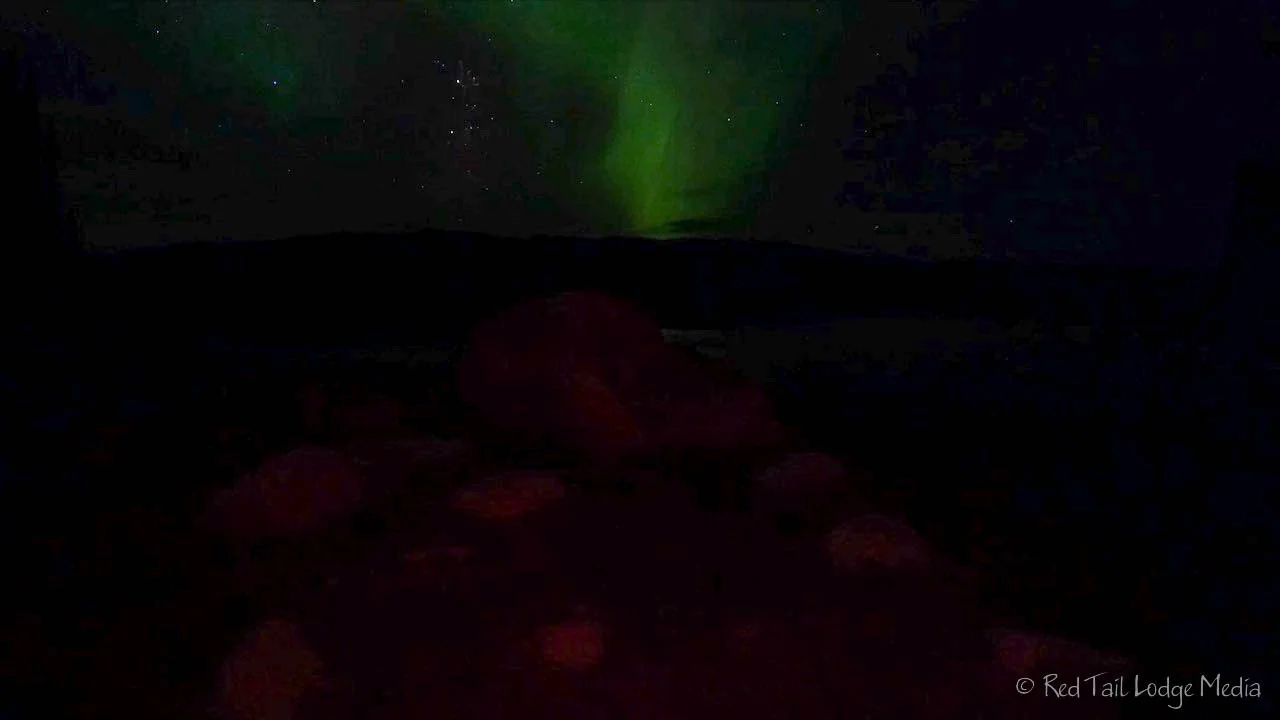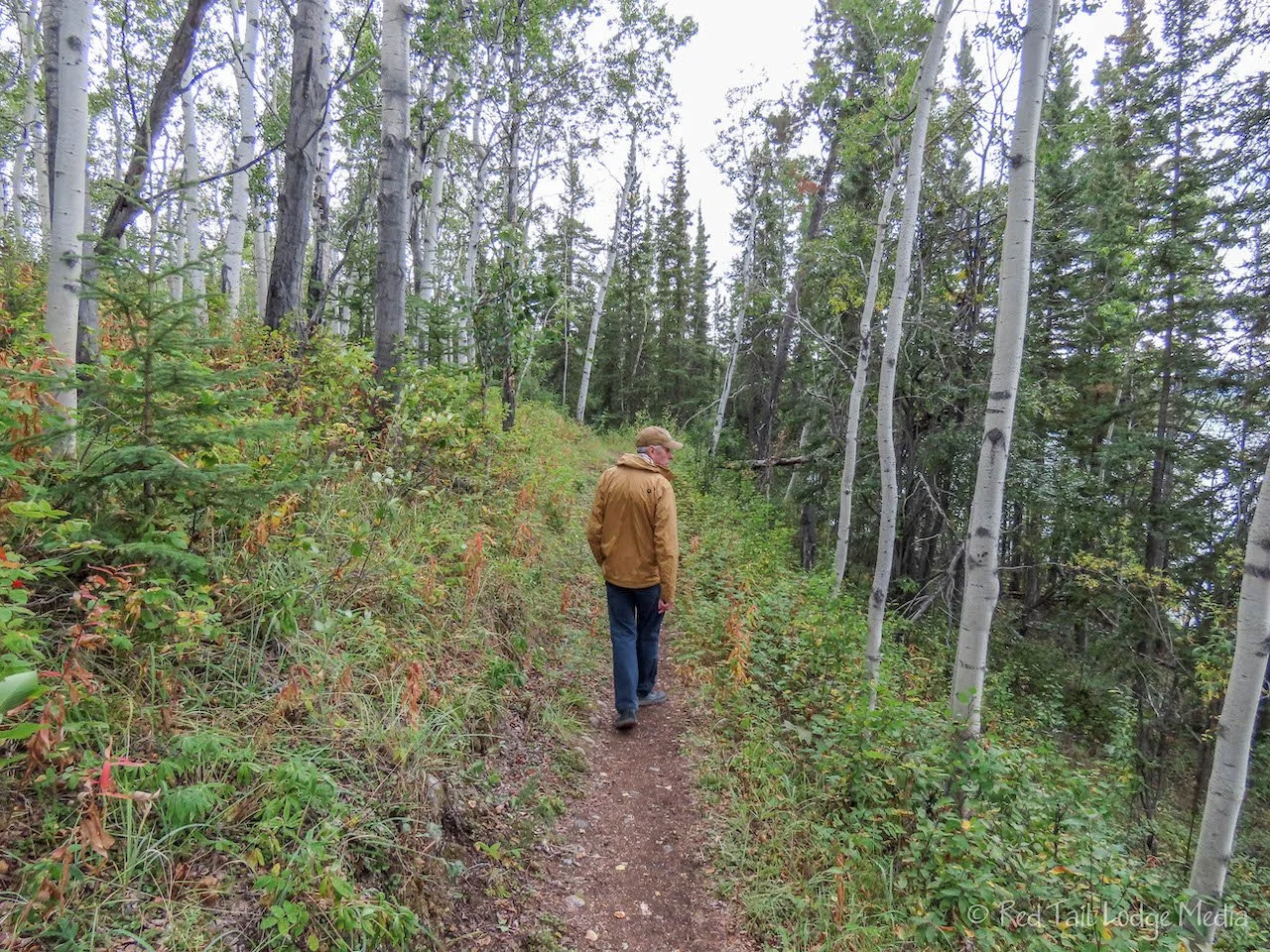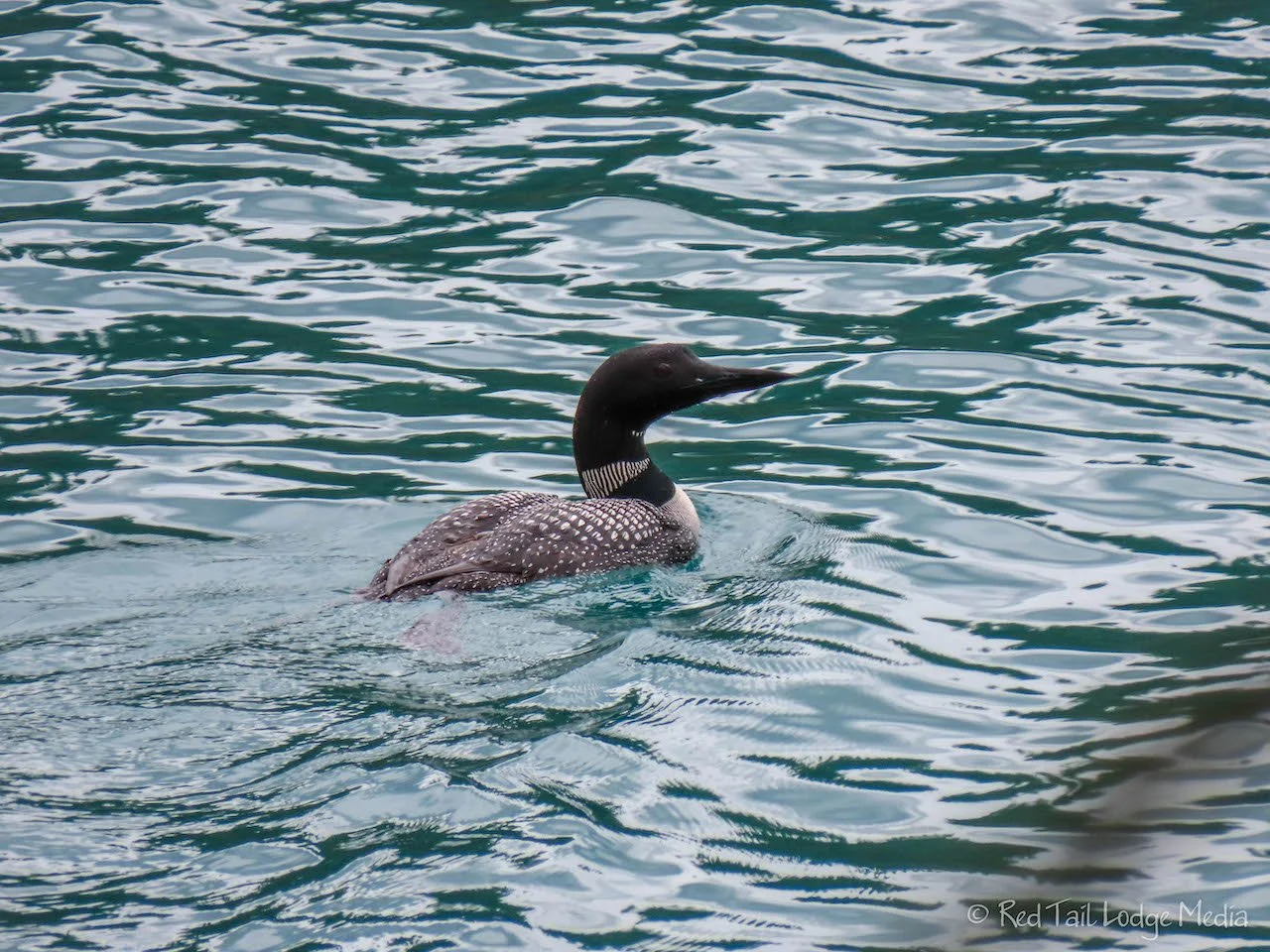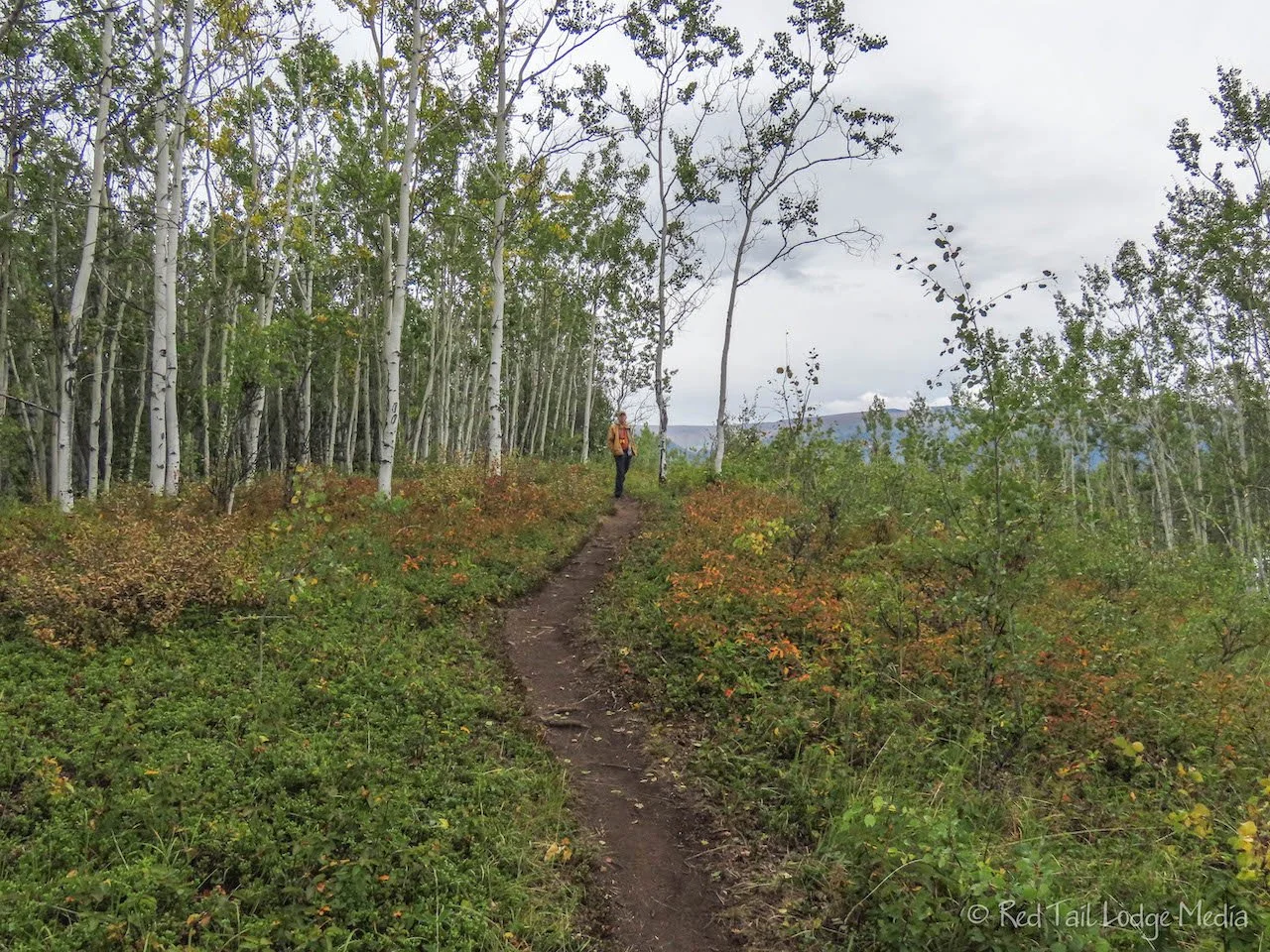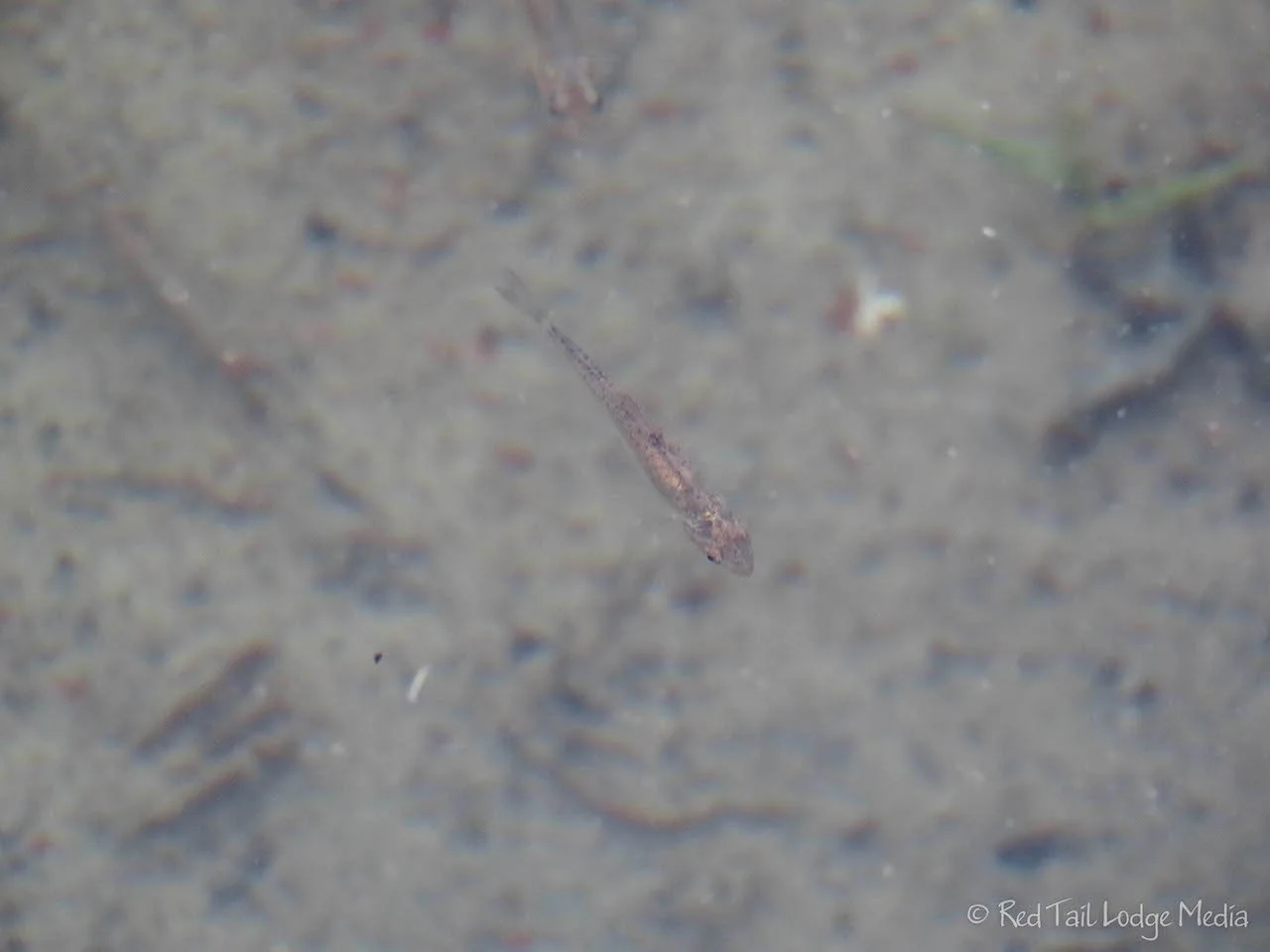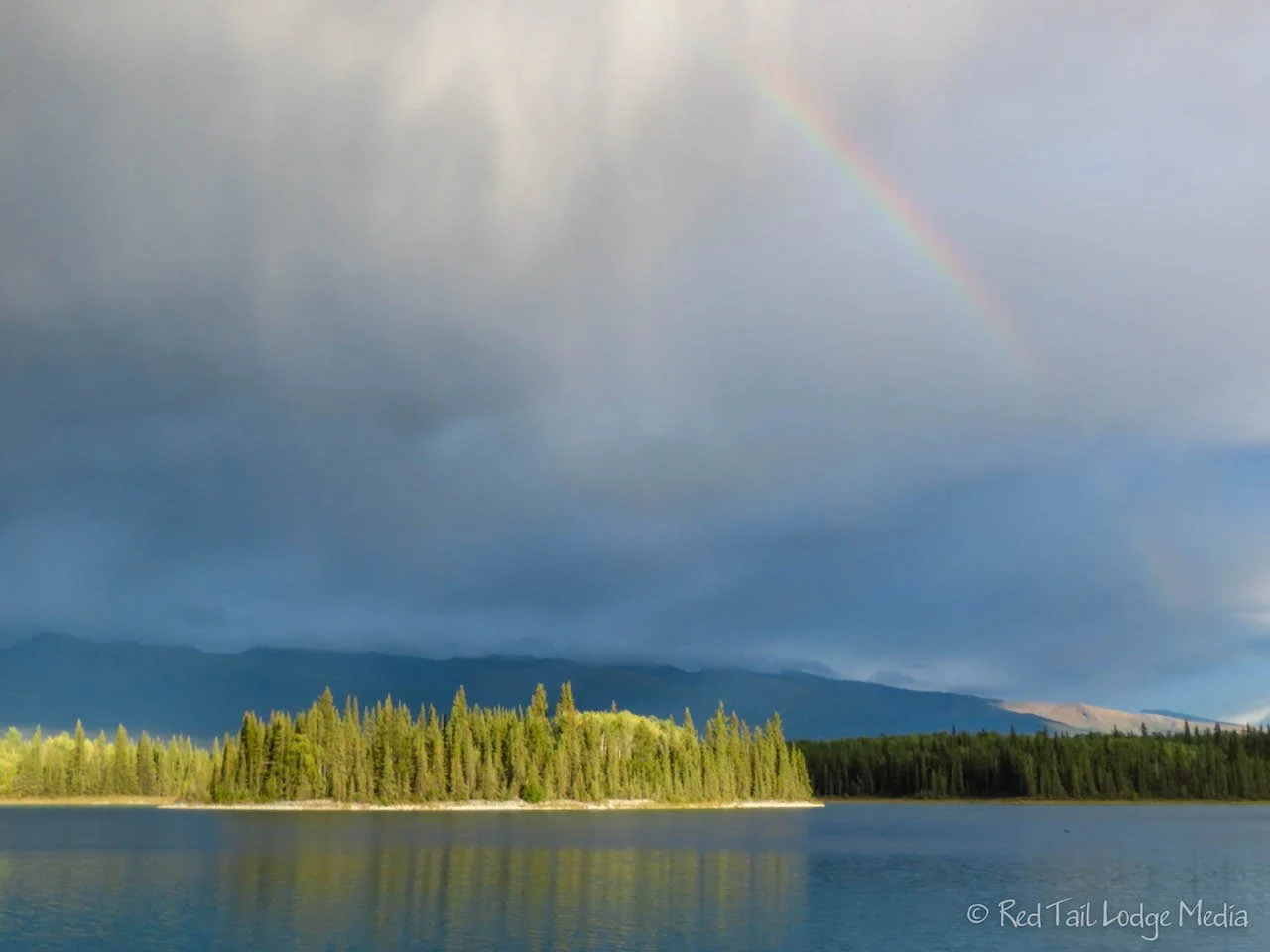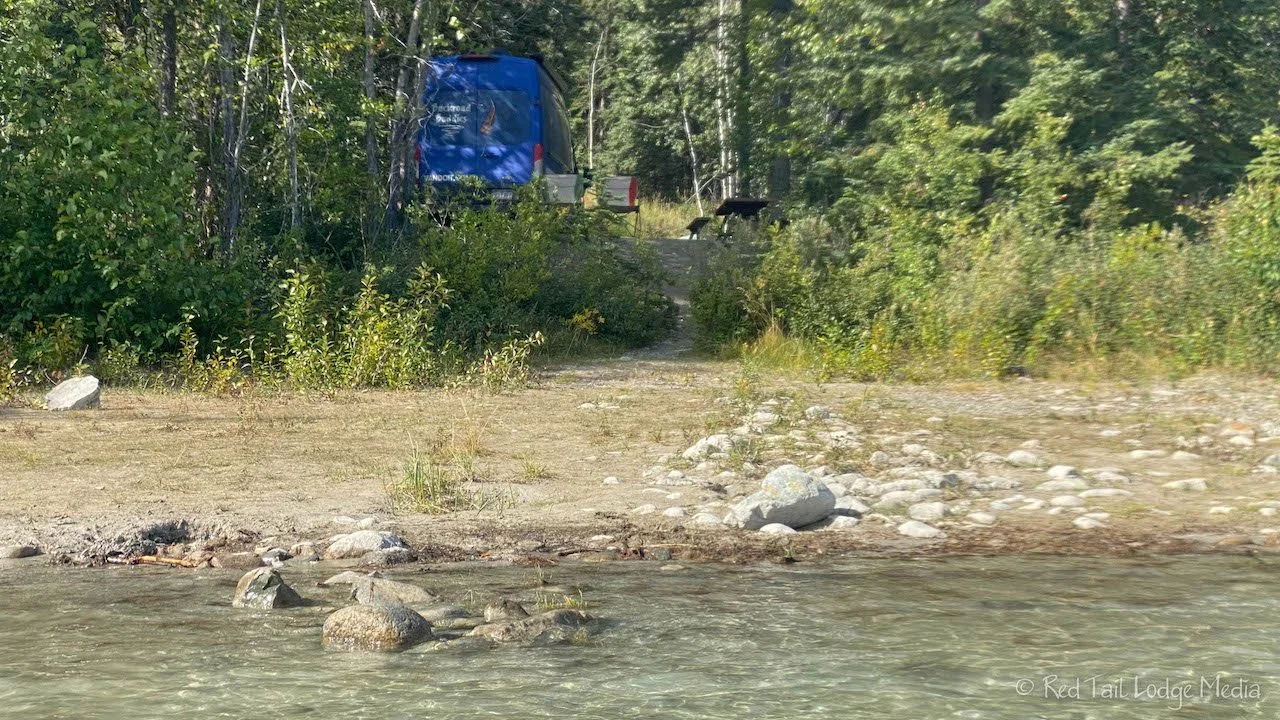Tā Ch’ilā Provincial Park, British Columbia - September 1st-4th, 2022
At Watson Lake, we left the Alaska Highway and turned onto the Cassiar Highway to continue our drive south. Tā Ch’ilā, formerly known as Boya Lake, is a beautiful provincial park in British Columbia along the Cassiar Highway.
Thursday was overcast and cool, with temperatures in the 40’s most of the day. It was a driving day, from Marsh Lake to Watson Lake. The drive was pretty uneventful.
We stopped at Teslin for gas and a sweet treat. We stopped at the Yukon Motel & Restaurant, the same place we stopped on our way up to Alaska (Alcan: Tagish, Yukon Territory - June 10th to 11th, 2022). However, last time we had lunch. This time we wanted to try their cinnamon rolls. Normally we find cinnamon rolls a little too sweet for out tastes, so we split one roll and split a blueberry muffin. Both were delicious. To our surprise, the cinnamon bun was just the right amount of sweetness for our tastes. Our votes for the best cinnamon buns on the Alaska Highway still goes to the Tetsa River Lodge (Alcan: Tetsa River, British Columbia - June 4th to 5th, 2022). Even though the Yukon Restaurant heated up our roll for us, you just cannot beat the hot buns fresh out of the oven at Tetsa River Lodge.
As we approached Watson Lake, there was a whole mountain side that looked like it had recently been burnt by a wildfire. Near the base of the mountain, there were several spots that were still smoldering with smoke rising up into the air. We didn’t see any flames, but we could smell the smoke in the air. The fire was far enough away that the smell was not strong, but it was still noticeable.
We started our drive early and reached Watson Lake by 12:30 pm. We were staying again at the Downtown RV Park (Alcan: Watson Lake, Yukon Territory - June 8th to 9th, 2022). Yes, the RV park is just a large gravel parking lot with full hook ups, but it is still a great place to re-supply. They have clean showers, a nice laundry facility, and are walking distance to everything in town, like a couple of restaurants, a bank, a grocery store, the Sign Post Forest, Wye Lake Park, and the Northern Lights Center.
After eating lunch, we did laundry and took showers. Then we went over to the Northern Lights Center. We skipped it the first time we were here. It shows documentary films in a dome theater, similar to the one we went to in the space museum in Hutchinson, Kansas earlier this year (Hutchinson, Kansas - April 2nd, 2022). Shows in the Northern Lights Center run every hour starting at 11 am with the last show at 8 pm. For $10 (Canadian), you see two films, a space-related film and the Aurora: Lights of Wonder. The space-related film changes every hour, but the second film is always the same. We went to the 4 pm show. Our space-related film was “Mars”. Both films were nice. They were well worth the $10 admission.
For dinner, we went out to the New Nugget Restaurant, a Chinese restaurant, although they also serve some other types of food, like burgers. We haven’t had Chinese food in a while, so it was a nice change.
Our original plan was to stay two nights at Watson Lake again. However, due to the holiday weekend coming up, our next destination, Tā Ch’ilā Provincial Park, required a three night minimum in order to make a reservation. So we cut our stay in Watson Lake to one night. We don’t like driving two days in a row, but the drive from Watson Lake to Tā Ch’ilā is only about an hour and a half (Google Map time). Since we had a short drive on Friday, we took our time leaving Watson Lake. After a leisurely breakfast, we emptied our gray water cans and filled our fresh water cans. Then we walked over to the grocery store and bought a few items to get us through the next week. Just out of curiosity, we walked over to the Sign Post Forest, just to see if our sign, that we hung earlier on our way north, was still there. Yup!
To get to Tā Ch’ilā, we drove north out of Watson Lake on the Alaska Highway, back the way we came the day before, for about 20 miles to pick up the Cassiar Highway leading south. We expected there to be some commercial traffic on the Cassiar since the Alaska Highway was closed further to the south due to a traffic accident and fire near a bridge. It had opened up again to light private vehicles, but was still closed to commercial traffic. There are not a lot of roads this far north, so about the only other option is to take the Cassiar. We came across some truck traffic on our drive, but not a lot.
So far the Cassiar Highway has not been that bad, road condition wise. Compared to the section of Alaska Highway from Destruction Bay to Watson Lake, the Cassiar is a little narrower with a few more dips and rough spots. And less traffic, despite the Alaska Highway being closed, not that there was a lot of traffic on the Alaska Highway to begin with. Most of the time, there was not another vehicle in sight.
Along the way, there was a sign warning us to look out for smoke. It didn’t say what to do if we saw smoke, but we didn’t see any. For a few miles, there was a ten foot wide plowed stretch of dirt along the right side of the highway. We’re assuming this was to act as a fire break. We’re not sure how recent the wildfire activity was, but it appeared to be over for the time being.
It was just before 1 pm when we reached Tā Ch’ilā Provincial Park. The campground is two kilometers (over a mile) from the highway through the woods, so there is no traffic noise from the highway at all, unlike the Marsh Lake Campground where we stayed a few days before (link to previous post). We lucked out on our reserved site, it was perfect. Our site backed up to Boya Lake, with an unobstructed view across the lake and to the mountains beyond. A short path brought us down to a rocky beach. When reserving a site online, it is hard to tell what a site will be like, so it is a gamble. However, we like the assurance that we’ll have a site, so we’re willing to take that chance.
The weather was gorgeous. The sun was shining with a few clouds in the sky. The temperatures were in the upper 60’s. There were people out on the lake in canoes and kayaks. After lunch, we walked around the campground and over to the boat launch. The park has kayaks and canoes for rent. It is $20 (Canadian) per boat for two hours. Life jackets and paddles are provided. The boat rental works on the honor system. There are envelopes to put your cash in and deposit into the pay box.
Since it was supposed to be cloudier and cooler the next couple of days, going kayaking on Friday seemed like the best time. So we went back to our Red Tail Lodge (our camper van) and changed out of our jeans and into hiking pants that could stand getting wet. Keith put on his Teva sandals and Ann put on her surf shoes. The walk back to the boat launch from our site was almost half a mile from our camp site on a gravel road. Ann discovered that surf shoes are not the best foot wear for walking on gravel roads. She could feel every stone right through the soles. A large stone seemed to find the exact same spot on her left heal every time, making it a little tender. Tevas are better for the walk, but Ann likes the surf shoes for getting in and out of the kayak, especially if the shoreline is a little mucky. However, the shore near the boats was rocky, not muddy at all.
Boya Lake is quite large. We only paddled a small section of it. The wind was rather strong, making the water rather choppy, especially when you left the shoreline. Of course, the wind was blowing away from the boat launch, so we knew the paddle back would be harder than the way out onto the lake. We rented two single kayaks. They did not have any skegs and the boats did not track at all. They seemed to have a mind of their own on which direction to go. So, between the wind and the lack of control over the kayak, it was a little bit of a struggle.
The views, on the other hand, were gorgeous. The shore was lined with spruce and aspen trees. Mountains can be seen in the distance in every direction. The lake consists of many coves and islands. After checking out a couple of coves, Keith decided he had enough of the choppy waters and headed back. However, he spent some time in the calm waters of the cove near the boat launch before quitting. He is not very comfortable in the water, so Ann was surprised he lasted an hour in the rough conditions.
Ann continued a little further down the lake, circling a couple of islands and exploring a few more coves. Being a little concerned about how long it would take her to get back against the wind and how Keith might get worried if she was out of sight for too long, she turned around after about 50 minutes on the water.
The waves splashed a little over the bow of the kayak as she paddled hard into the wind. She made good time getting back and was in the cove next to the boat launch in less than 40 minutes. After spending some time in calm cove checking out a handful of ducks splashing around, she docked with plenty of time remaining of her two hours. It was still a great time. This was the first time we paddled all season and it felt good to be out on the water.
After dinner, we walked around the campground again. It was about 6 pm and there were still about eight or nine camp sites available. Not all the sites are reservable. Some are left as first come/first serve. Unlike the reservable sites, the first come/first serve did not have the three night minimum for the holiday weekend.
Even though the aurora activity was not forecasted to be high Friday night (Aurora Forecast), the skies looked like they might be clear. So we decided to stay up to look for the northern lights. We were getting a little jealous of all the other people on the RVing to Alaska Facebook group posting their pictures of the aurora borealis. Well, Keith laid down while Ann stayed up until midnight. At 11:30 pm, the sky was clear. Stars were visible and the sky to the north looked somewhat bright. However, by midnight, some clouds rolled in. So Ann turned in for the night. At about 1:30 am, Keith got up to use the restroom. As soon as he got outside, Ann heard a knock on the side of the van. She poked her head out the door and Keith told her to come out. The skies had cleared again and there were some northern lights starting directly across the lake from us and heading directly over our heads. They were faintly green in color and not very bright, but they made a nice reflection off the surface of the lake.
Keith took a few hand held pictures with his iPhone while Ann took a picture, short video, and a short time-lapse with the GoPro. We’ve never seen the northern lights before, yet alone try to take any pictures of them, so we weren’t sure if any of them would turn out. The iPhone pictures turned out OK, but a little grainy with some movement in the stars (due to being hand-held with a long exposure). The GoPro picture and video were nothing but black. However, the GoPro time lapse turned out pretty decent. Unfortunately, Ann didn’t let it run very long because she didn’t think it was capturing anything. Hopefully we’ll get another chance to try again during one of the next three nights when the aurora forecast calls for high activity.
Ann had previously changed some settings on the GoPro Timelapse according to some info she found online about photographing auroras (capturetheatlas.com). The settings she used on our GoPro 10 Black for the Night Lapse time lapse were Resolution - 4K, Lens - Wide, Interval - Auto, Shutter - Auto, Timer - 3s, ProTune Bit Rate - Standard, ProTune EV Comp - 0, ProTune White Balance - 3200K, ISO Min - 100, ISO Max - 800, Sharpness - High, Color - Natural. Most of these settings were what the Night Lapse mode was originally set to. The only changes Ann made were to change the white balance from auto to 3200K and the sharpness from medium to high.
Saturday was cloudy all day, but it didn’t really rain. There was just a little drizzle around midday. In the morning, we strolled around the campground. We were joined by a couple in a nearby camp site who were from Dortmund, Germany. They had flown into Whitehorse and rented a truck camper for their vacation. It’s nice to have someone new to liven up the conversation. We had a wonderful chat with them during our walk. One of these days we should really try speaking their native language instead of English when we meet German nationals. Our German, which wasn’t that great to begin with, is rather rusty and we could use the practice.
There are two marked trails in the park, one at each end of the campground, both of them not very long. In the afternoon, we combined the two trails. The combined trails along with the walk from one end of the campground to the other turned out to be 4.1 miles with an elevation gain of 413 feet which took us two hours to complete. It was hike number 39 of our 52 Hike Challenge for 2022.
The first trail was the Lake Shore Trail, which followed the shoreline north from our camp site. It was a pleasant little dirt trail through the spruce and aspen trees, with a few little spurs that took you over to the rocky shore. A variety of berries and rose hips lined the path. Birds were darting from tree to tree, filling the air with their chirping. A couple of loons were in the turquoise water of a little cove next to the trail.
The second trail was the Beaver Lodge Trail (Boya Lake Interpretative Trail) which started near the boat dock. It has signs to read every now and then along the trail. The trail starts out along the shoreline, but then turns into the woods of spruce, aspen, and pine. At the end of the trail is a beaver lodge and a beaver dam. On the way there, there was an aspen tree laying across the trail that we had to step over. It was freshly cut down by a beaver. There were also some fresh logs on the beaver lodge. We sat down across the water from the lodge for about five to ten minutes, hoping a beaver would show itself to us, but one never did. However, a bald eagle flew overhead while we were there.
As we passed by the boat dock on the way back, we noticed several schools of fish hanging out under the dock. We were wondering where all the fish were! Considering how clear the water of the lake is, we thought we would see more fish in the water. We didn’t see any while we were kayaking out on the lake the day before. We’re not sure why the fish congregated near the dock. Hopefully people aren’t feeding them.
As we were returning to our Red Tail Lodge, a couple of loons out on the lake were being rather noisy. We’re not quite sure why they were being so vocal for about 15 minutes or so. Perhaps it had something to do with the bald eagle soaring in the area.
Due to all the clouds, with rain in the forecast for overnight, we didn’t have high hopes for seeing the northern lights on Saturday night. Instead of staying up, we set our alarm for 12:30 am. When it went off, we looked outside. It was still overcast. So we set the alarm again for 1:30 pm. When we woke up to the second alarm, we could hear the rain on the roof of our van, so we rolled over and went back to sleep.
It was still raining when we woke up Sunday morning, but it stopped shortly after that. We walked the campground again in the morning.
We saw a sign posted about two geocaches in the area. We’ve never done geocaching before, but since we already hiked all the trails, we thought we might try finding one of them in the afternoon. However, Keith wasn’t feeling well, so Ann decided to hike the Beaver Lodge Trail again by herself. She didn’t feel comfortable going off trail by herself in unfamiliar bear territory. As a safety precaution, she took the Garmin InReach (paid link) and bear spray (paid link) with her. We hadn’t had cell service since we left Watson Lake, so Ann had no way to contact Keith if something went wrong. However, we had been on the trail before, it was well marked, so she had no fear of getting lost. If she really got into trouble, she could signal an SOS via satellite from the InReach.
Ann sent a preset “starting an adventure” message via the InReach at the start of the trail (which sends an email to both of our children in addition to ourselves). When she reached the beaver lodge, she sent a preset “everything OK” message. She stayed near the beaver lodge for 15 minutes this time, again hoping to catch sight of a beaver, but no such luck. On her way back down the trail, the aspen tree which laid across the trail had a fresh, large bite taken out of the trunk. She didn’t remember that bite being there the day before. Perhaps the beavers were actively working on breaking down the aspen tree into pieces they could haul back. When she returned to the trailhead, she sent yet another preset message, a “done with an adventure”. The InReach also sends the GPS coordinates in addition to each message. It’s a handy little device for feeling more secure.
After dinner, a light rain shower passed through. Then a beautiful rainbow appeared over the lake. What a gorgeous view, right from our camp site!
Since we hadn’t moved our Red Tail Lodge in over two days, our lithium batteries were getting extremely low, about 20%. They shut off at 5%, so we idled our van engine for about 20 minutes to put another 5 or 6% back into our batteries. That should get us through the night with the furnace on and leave enough for heating water for coffee in the morning.
The weather forecast looked a little clearer for the night, so we had our hopes up for seeing the northern lights. We set our first alarm for midnight. The sky looked mostly clear, with stars visible, but no aurora. So we set another alarm for 1 am. Still mostly clear with no northern lights. Yet another alarm for 2 am, with the same results. Bummer! We gave up after that. So much for the aurora activity forecast. Did the aurora borealis come and go in less than an hour? We’ll never know.
We thoroughly enjoyed our three day stay in Tā Ch’ilā, despite not really seeing much of the northern lights. The setting was beautiful along with lovely trails. Having kayaks to rent was a nice bonus because it gave us an opportunity to get out on the water, since we left our kayak at home for the Season Four.
Check out our related video: Tā Ch’ilā Provincial Park, British Columbia
(Ann)

